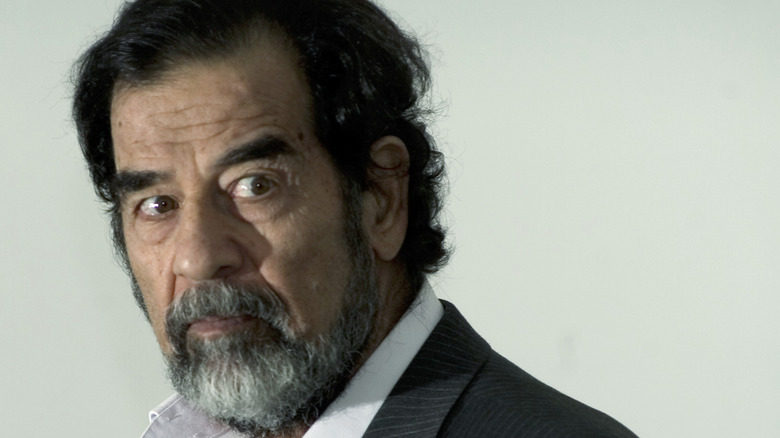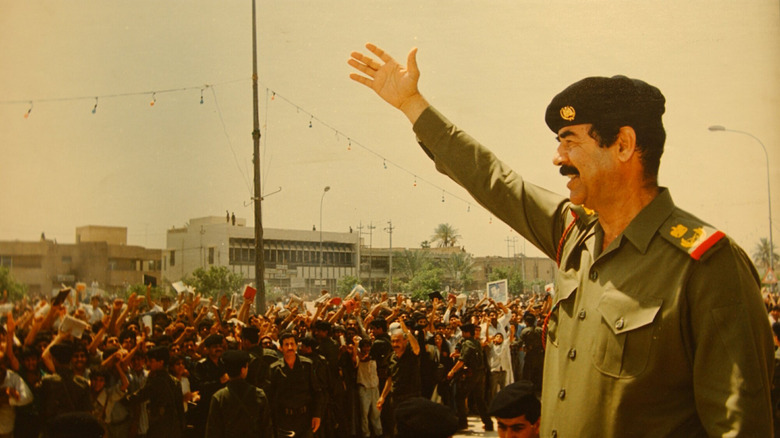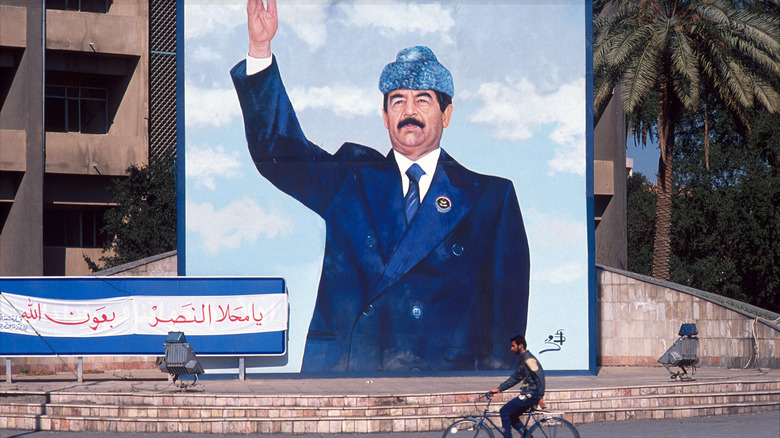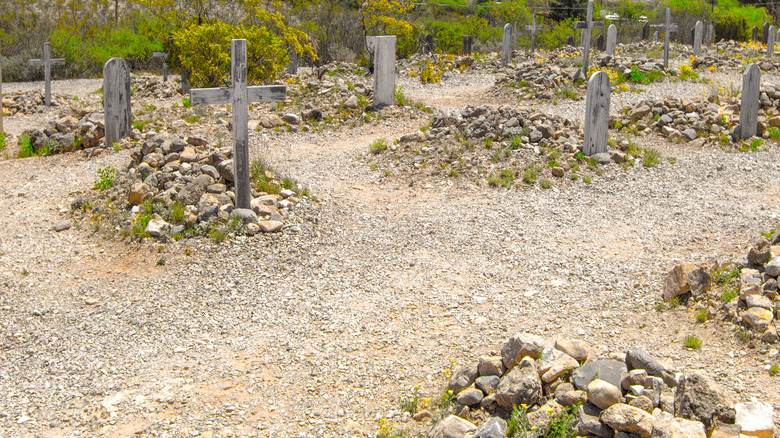The Truth About Saddam Hussein's Corpse
On December 13, 2003, the American public learned that Saddam Hussein was officially a prisoner of the U.S. government (per CBS News). After months on the run, United States forces successfully executed Operation Red Dawn and were able to bring the toppled dictator to justice.
Eight months after overthrowing Hussein, the U.S. government had placed him at the top of the most-wanted Iraqis list. And for eight months, Hussein was able to evade his pursuers. But his luck ran out that morning, as he was found on a farm outside the Iraqi city of Tikrit (via The New York Times). Dragged from a hole in the ground, the disheveled former President of Iraq was arrested and charged with crimes against humanity.
Following a trial conducted by the Iraqi Special Tribunal, Hussein was found guilty on November 5, 2006, and sentenced to hang (via CNN). After Hussein lost a last-minute appeal to the Iraqi Supreme Court, his death sentence was carried out on December 30.
Rise of a dictator
Hussein's road to leadership was paved with the blood of his political enemies. At the age of 22, Hussein was part of an assassination plot to execute Iraqi General Abdel-Karim Kassem (via The Denver Post). The plan was botched, however, and Kassem was only wounded in the attack. After fleeing Iraq to Egypt, Hussein and his fellow Baathist party members regrouped with better organization. He returned to Baghdad in 1963 to participate in a coup that toppled Kassem's government, resulting in Kassem's murder.
1968 proved to be an important year in Hussein's power trajectory. His first cousin, Ahmed Hassan al-Bakr, became the first Baathist president of Iraq. Hussein was appointed to be the head of Internal Security (via Denver Post), a role that allowed him to stay close to his cousin. By the time al-Bakr's health began to fail in 1979, Hussein was serving as the country's vice president. As fate would have it, al-Bakr took a turn for the worse and could no longer serve the Iraqi people. Upon resigning, the role of the presidency was turned over to Saddam Hussein (via World Atlas).
The Iraqi people had thrived under the leadership of al-Bakr. During his tenure, the government "financed subsidies on basic commodities, reduced taxes, and implemented public welfare programs (via World Atlas). The growing oil industry helped his endeavors, leading many Iraqi citizens to a better quality of life than they had ever experienced. What al-Bakr's successor would bring to the table almost immediately sent the country into a tailspin.
A brutal reign
Almost immediately after taking over the presidency, Hussein had his political opponents arrested and tried for treason. Many of them were executed after being found guilty in sham trials. Concerned about the rising Shi'ite movement in Iran, Hussein launched a full-scale war against his neighbor. Unfortunately, much of the world supported Hussein in this effort, resulting in his army gaining access to international funds, sophisticated weaponry, and chemical weapons (via World Atlas). While this eight-year war destroyed the Iraq economy that had blossomed under his predecessor, Hussein was committing atrocities against people inside his own country's border.
Paranoid about any of his subjects being loyal to Iran, Hussein began to purge his country of suspected traitors. In 1980, Hussein began the persecution of thousands of Fayli Kurds, whom he considered Iranian (via ABC News). In 1983, Hussein called for the capture of those associated with the Kurdistan Democratic Party. Over 5,000 males disappeared, some as young as 10 years old. Decades later, hundreds of their bodies were found buried in a mass grave (via ABC News).
In 1988, Hussein launched chemical weapon attacks against Kurdish villages, killing an estimated 50,000-100,000 people. During that same year, Hussein gassed the village of Halabja, killing more than 5,000 innocent people in a single day (via ABC News).
Hussein's final resting place is unmarked
For these and other crimes, Hussein was at last executed. But what became of his body? Immediately after his execution, Hussein's body was placed under the control of the United States. In early 2007, Hussein was interred inside an opulent mausoleum at his home village of Awja (via BBC News). Out of growing fears of vandalism and corpse desecration and an abundance of caution, officials and family members began considering moving the body elsewhere. Finally, in 2014, Hussein was disinterred. The exact whereabouts of his burial are unknown, and will likely stay that way for years to come.
As it turns out, moving Hussein's body was the correct move. Not long after the transfer, his family's tomb was almost completely destroyed by a battle in Awja (via BBC News). The once majestic resting place of one of the 20th century's most brutal dictators remains leveled.



